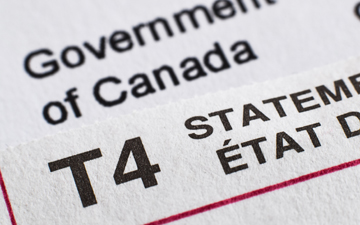10 fun facts about taxes in Canada

Who pays more? Individuals or corporations? Is Canada a tax haven? And who is paying their fair share? We have the answers courtesy of Canadian Tax Facts
TORONTO, July 16, 2023 – To paraphrase Benjamin Franklin, nothing in this world is certain except death and taxes, and we’re not even sure about taxes anymore. Canada has long had a reputation for its byzantine tax legislation, its murky and secretive tax structures, and the growing sense among Canadians that the middle class was footing the bill for corporations and the wealthy.
Which is why it’s always instructive to look at the data. Canadian tax accountant and lawyer David J Rotfleisch publishes an annual Canadian Tax Facts document (free to download) that includes a wealth of information about Canadian tax. Here are 10 fun facts that stood out among the data.
1. Canada collects more than twice as much personal tax than it does in corporate tax.
Income tax accounts for almost 70 per cent of federal total revenue and personal income tax revenue is its largest source. In 2021-22, the federal government collected $198.4 billion in personal income tax, $78.8 billion in corporate income tax, and $10.8 billion in non-resident income tax.
2. In an average year, the 102 biggest companies in Canada pay $10.5 billion less than they would if they paid tax at the official corporate tax rate.
Sixty-five years ago, people and corporations contributed equal amounts of income tax to the Canadian government. Since then, the scales have tipped in the corporations’ favour. Corporate taxes have been slashed and people have been forced to make up the difference. (Source.)
3. But the gap between personal and corporate tax has narrowed.
As a percentage of total revenues, personal income tax revenues fell by 7.2% to 48 per cent in 2021-22, while corporate income tax revenues increased by two per cent to 19.1 of total revenues.
4. The tax gap is between $18.1 billion and $23.4 billion, or 9% of total tax revenues.
The tax gap is the difference between the taxes that are actually paid and those that are owed. For years, the Canada Revenue Agency fought to keep tax-gap data secret, but finally bowed to public pressure. The most recent figures, however, are for 2014-18, prior to the pandemic.
5. In 2021, the total number of tax filers in Canada was equal to around 28.1 million individuals.
Ontarians led the way with 10.7 million filers, followed by Quebec (6.6 million), and British Columbia (3.8 million).
6. Forty per cent of Canadians pay no income tax.
Low-income taxpayers get paid back through benefits and tax credits and may receive more money in refunds than they owe in taxes. Higher-income taxpayers can reduce what they owe through RRSP deductions, charitable donations, and tax-free benefits. Both groups pay other forms of taxation such as sales tax.
7. 23 taxpayers were convicted of tax evasion of more than $4.4 million collectively.
The Canada Revenue Agency issued more than $3.3 million in fines in fiscal 2021-22.
8. There are about as many high-income earners in Canada as low-income earners.
According to 2022 data, one million Canadians made over $150k per year, while 1.1 million Canadians make less than $5k per year. At the highest end of the spectrum, 300k Canadians made over $250k in income. (These do not include HNW individuals who are compensated in stock options rather than salary.)
9. About 70 nations worldwide qualify as tax havens, including Canada and the United States.
Different organizations have different ways of defining tax havens. WorldData.info lists the countries and respective organizations. Oxfam ranks Canada has a tax haven. The Panama Papers revealed that law firms market Canada as a tax haven, establishing shell companies here to evade taxes.
10. The CRA’s annual operating budget for 2023-24 is roughly $4.13 billion.
The CRA is the largest organization in the Canadian federal public service by number of personnel with 54,933 employees in 2022. The average CRA worker is 44 years old and has 11 years of service. They work at 57 tax service offices spread out across Canada, where technology spending and the ratio of total revenue collected to total operating expenditures is below the average of similar countries.
And watch for the $4.13 billion budget to increase with the salary hikes won in the recent PSAC strike.
Article by Canadian Accountant staff. Data provided by “Canadian Tax Facts 2023,” published by 2023 Rotfleisch & Samulovitch Professional Corporation on TaxPage.com.









(0) Comments